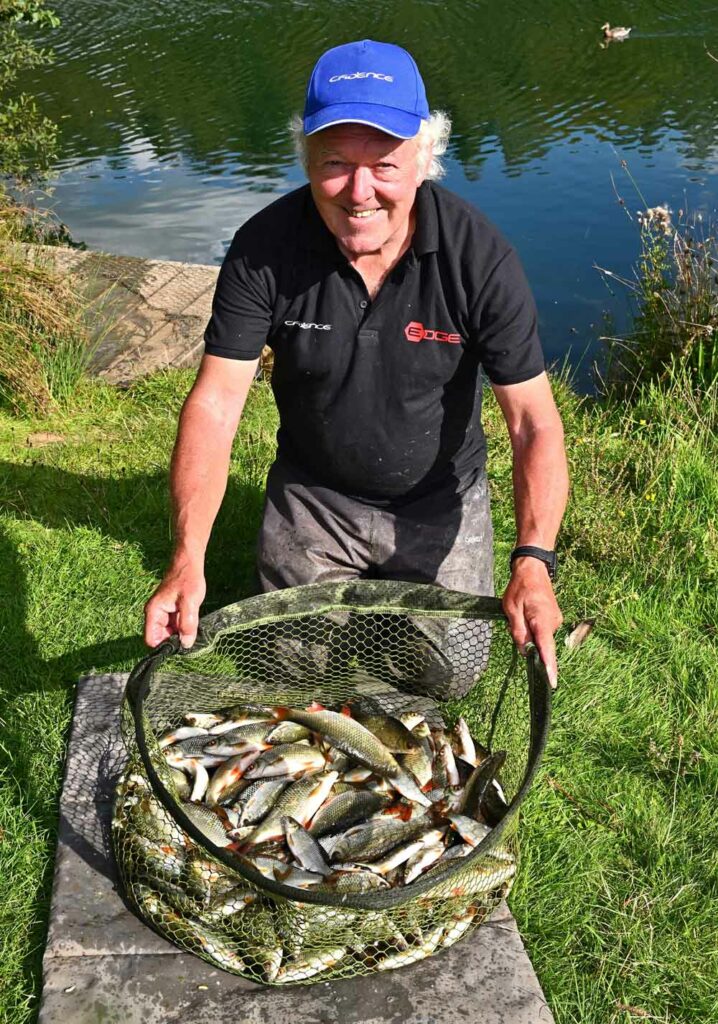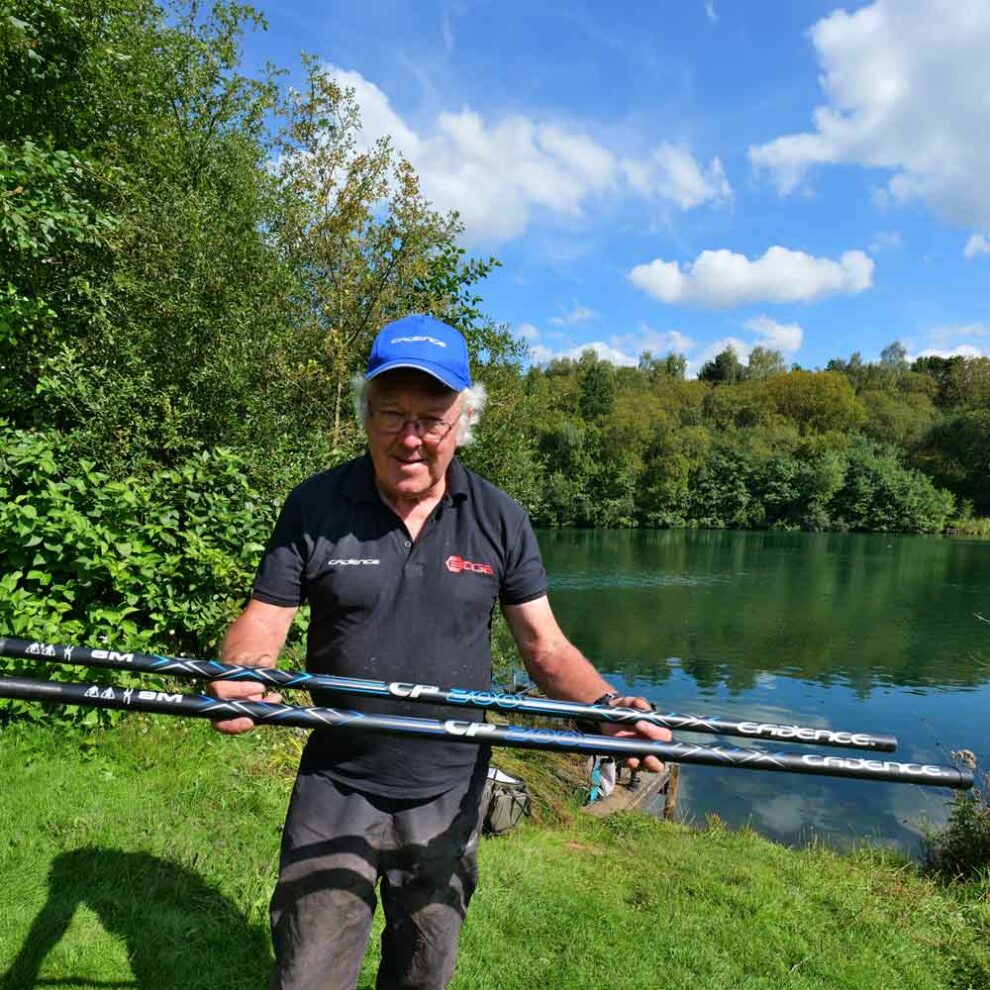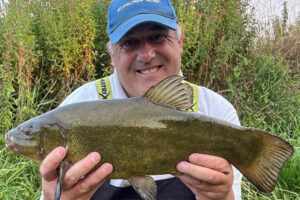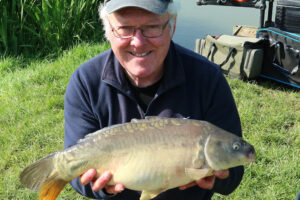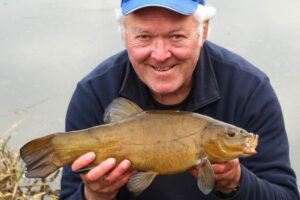Dave Coster has been taking another look at whip fishing, a brilliant method that keeps you busy from start to finish.
Two Choices
Cadence offer 6m and 9m versions of their CP200 whip, which are slightly different in design. The 6m option features a telescopic top 3, while the 9m has a tele top 5. The latter tweak is there to maintain stiffness when the longer pole is set up at greater lengths, although it’s difficult to spot any difference in actions when both models are assembled at identical reach. Some anglers will only need the 6m product, which amply covers many situations. The 9m becomes more important for those who fish deeper venues, also flowing water where adding sections increases trotting distance. Whip fishing is something of a forgotten art, or just an occasional treat. But recently, I’ve rediscovered how effective this method can be, especially on venues with a big head of silver fish. Apart from being a comfortable catching method, fishing to hand is undoubtedly the quickest way to amass big catches.
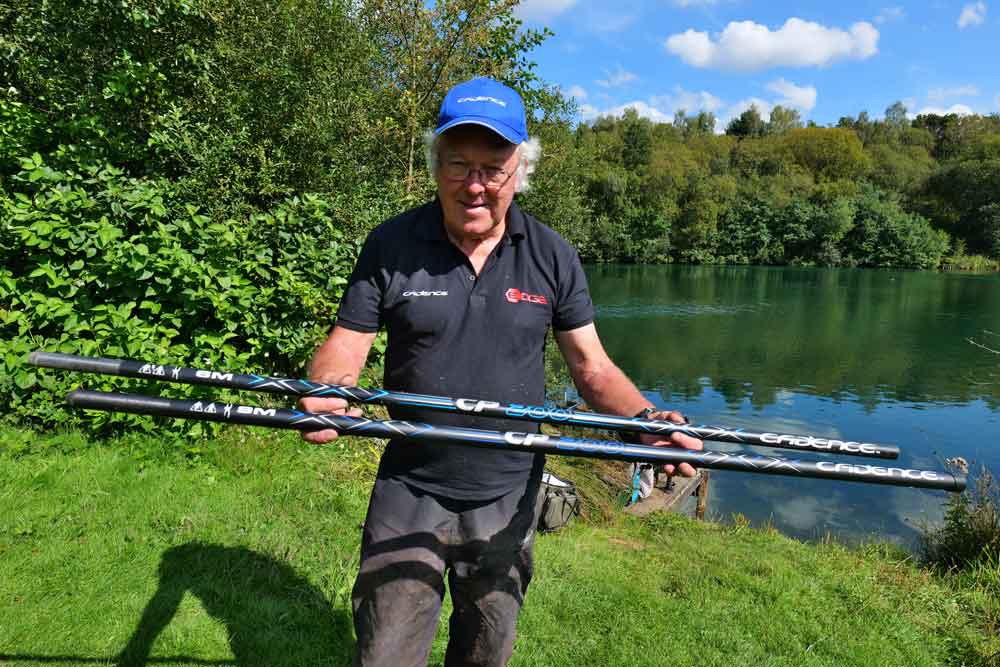
Rig Options
I always use carbon stemmed pole floats for whip fishing, finding wire too heavy. The latter causes an imbalance, making the float want to fight against its loading, casting less smoothly. There are several ways you can set up whip tackle. Strung shotting only works at close range, or when breaking down sections on a short line. Typically, olivettes are the main weights used for fishing to-hand style, although slightly strung or tightly bulked micro shot are another way to go. With floats up to a gram, shot or Stotz weights work fine. For bigger capacity rigs carrying more weight, olivettes are undoubtedly better. They need to be firmly anchored, otherwise they slip and bounce around. I lock these centrally bored weights with a fine bristle, combined with small shot either side. Using extra shot below acts as a kicker, preventing hook lengths from tangling back around bulk setups.
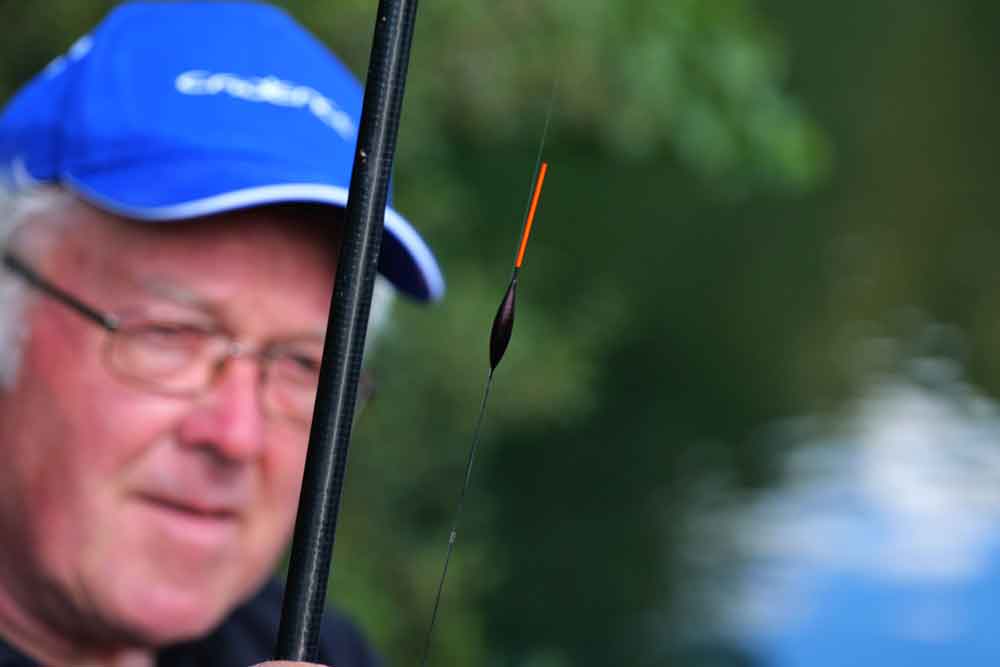
Speed Fishing
What makes the whip so deadly is the way you can feed so regularly with it, whether introducing neat stuff like maggots and casters, or using groundbait. In both cases, throwing by hand is the fastest technique. When you get swims buzzing with either option, the only thing that can beat this method is bags of big fish. Catapulting loose bait is an alternative at greater range, in either flowing or deep water, but throwing is always better whenever it’s possible. Cupping rarely applies here, which tends to be too slow. The main secret with any length of whip is to keep feeding, which pulls fish within range and holds them there. This often entails using a fair amount of bait; maybe two or more pints of loose gear, or 2 to 3 kilos of prepared groundbait. In the latter case, 1.5 kilos of your favourite recipe, plus plenty of brown crumb to bulk it out, will turn into 3 kilos after adding water.
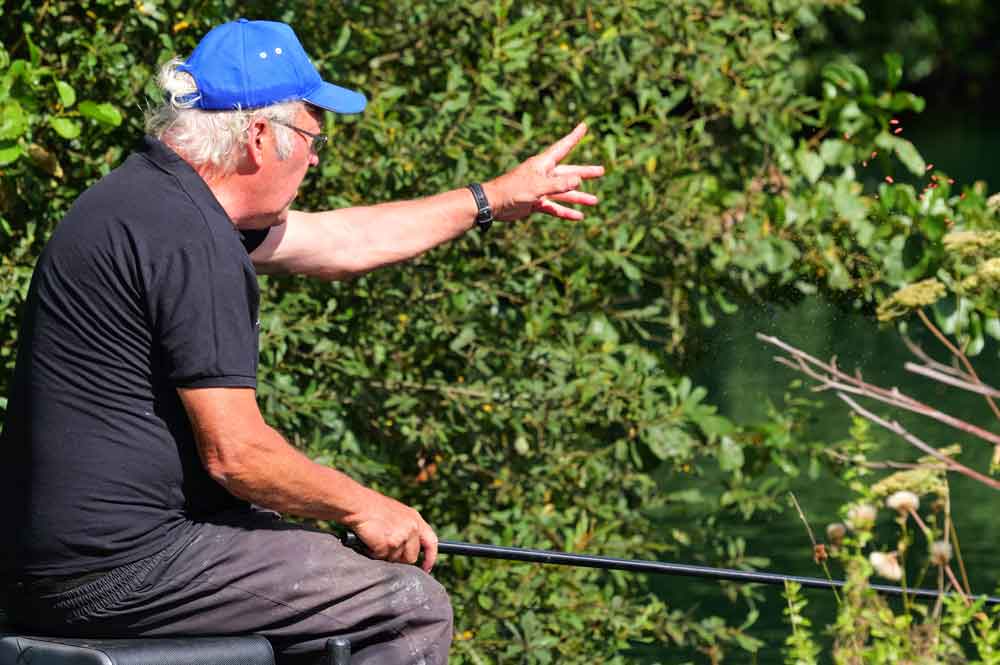
Number Crunching
Many start their fishing careers catching small fish, totting up the number, creating a target to beat the next trip. That’s what hooked me, although when I was a kid, it was rare to get anywhere near the three-figure mark. Modern whip fishing has taken the numbers game to new levels. Aiming for at least 300 silvers in a 5-hour session can take you into double figures, but with tiny fish like bleak or gudgeon, many more might be needed to gain a decent weight. Reaching the 300 mark over 5 hours averages one a minute, while in match fishing, anglers accumulate even more colossal catches of small fish. Targeting 3 to 4 a minute over a session is hard graft, but rewarding when weights up to 40lb are recorded. Speed fishing can be mentally and physically exhausting, but the whip balances out poor big fish areas in competitions, providing potential to frame from otherwise no-hope pegs.
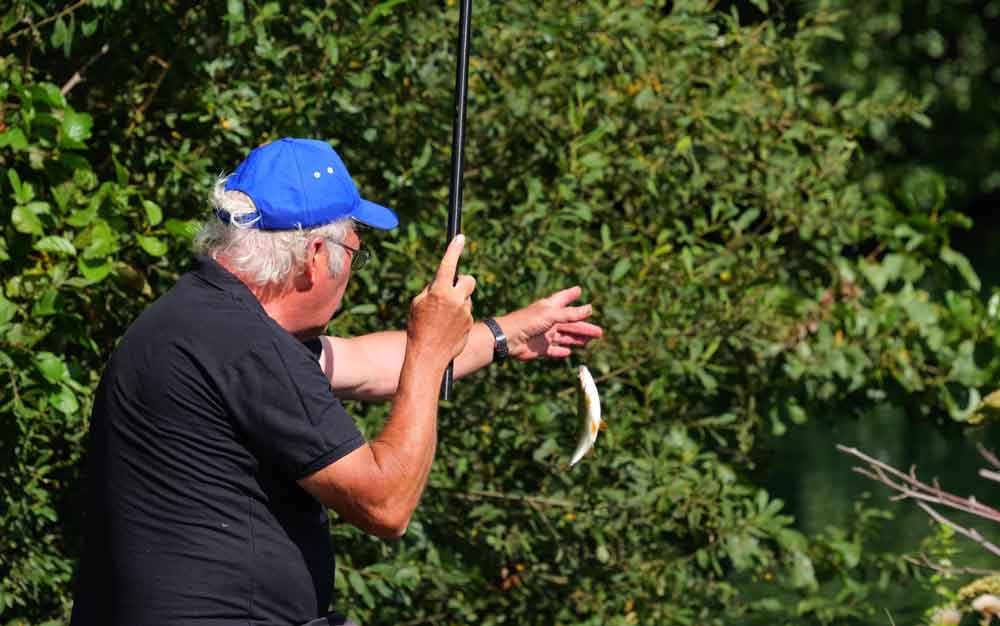
Flick Tips
Both Cadence whips are supplied with solid carbon flick tips, which I prefer using most. They provide a better feel factor, also helping to propel light tackle out more efficiently. However, it’s common practice to invest in spare top 3 kits, cutting off the flick tips and installing elastic. This can be beneficial for bagging bigger fish with stepped-up rigs, also when using a short line and breaking down sections, similar to normal poles. But whips are much thinner and lighter, which makes them particularly useful in windy conditions. Relying on a slim flick tip helps too, stopping top kits from blowing about too much. To avoid getting broken up when bigger fish are about, I use slightly stronger gear. I’ve landed some surprisingly big lumps on whip tackle without elastic. I prefer Stonfo style flick tip connectors for this type of fishing, which are far less fiddly than other options.
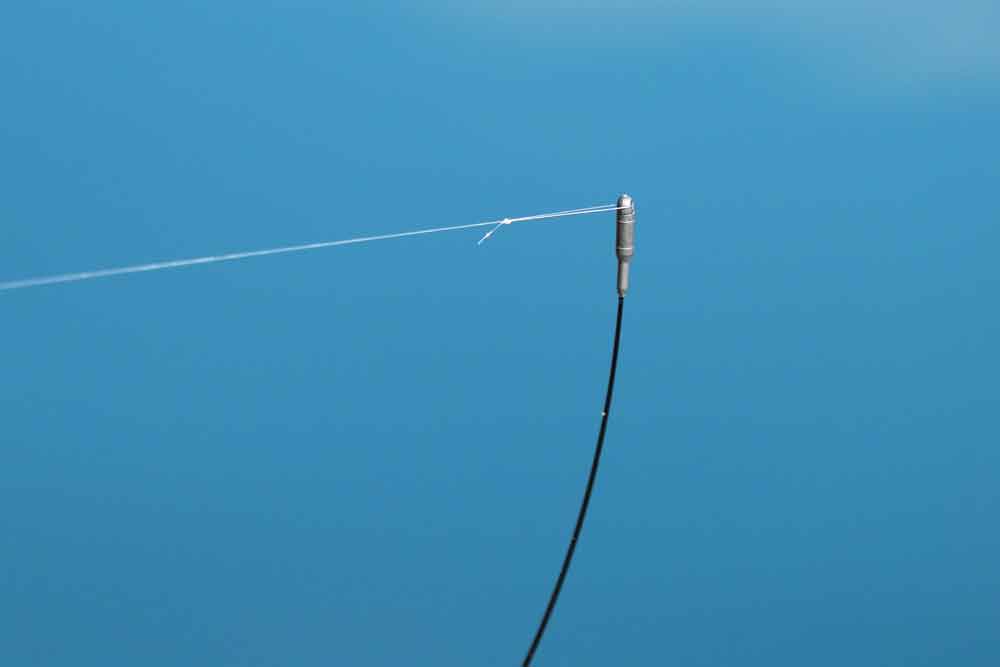
All Action
Once you get a swim producing within range of a whip, it’s possible to double or treble the number of fish being caught by other anglers using running line, or long pole tactics. Even if you miss a bite, the tackle is back in the water almost instantly, looking for yet another indication. For the first hour or so, or maybe over a whole session, I count my fish. This helps to form an idea of the potential catch that’s on the cards, assessing whether it’s viable to continue, or if a switch to another method is needed. Sometimes, if the fish aren’t coming fast enough, it can pay to rest a whip feed line. Continuing to feed it regularly, while doing something else, can get the fish feeding confidently for later in a match or pleasure stint. Having a whip feed line as a back-up, when involved with other tactics, can boost average catches into mega ones during the latter stages of your time on the bank.
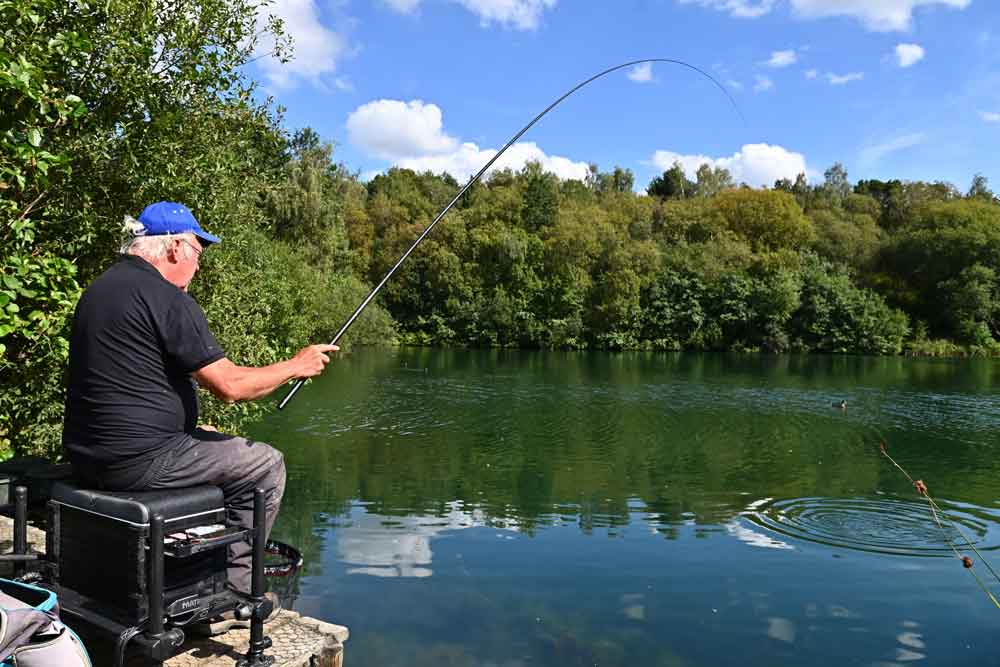
Size Factor
I call roach like this stamp fish; not too big to swing in, not too small to require huge numbers to build a big weight. Rudd, perch, skimmers, and dace are just as welcome for accumulating big hauls. Obviously, if much bigger bonuses can be netted, they boost target weights considerably. Sometimes big fish do get tamed on whip tackle, but it can be a hairy experience coaxing them in. That’s why I use the strongest line I can get away with. Stepping up just one diameter with your hook length and main line, makes a huge difference to what you can land. I’ve caught fish to over 5lbs on a flick tip. But there is a safer trick I often use, having a back-up heavy-duty rig with my elasticated Cadence margin pole. This is carefully set to short line exactly where my whip float is landing. It comes into play whenever I spot telltale surface bubbles, which is normally a signal that something big has moved in.
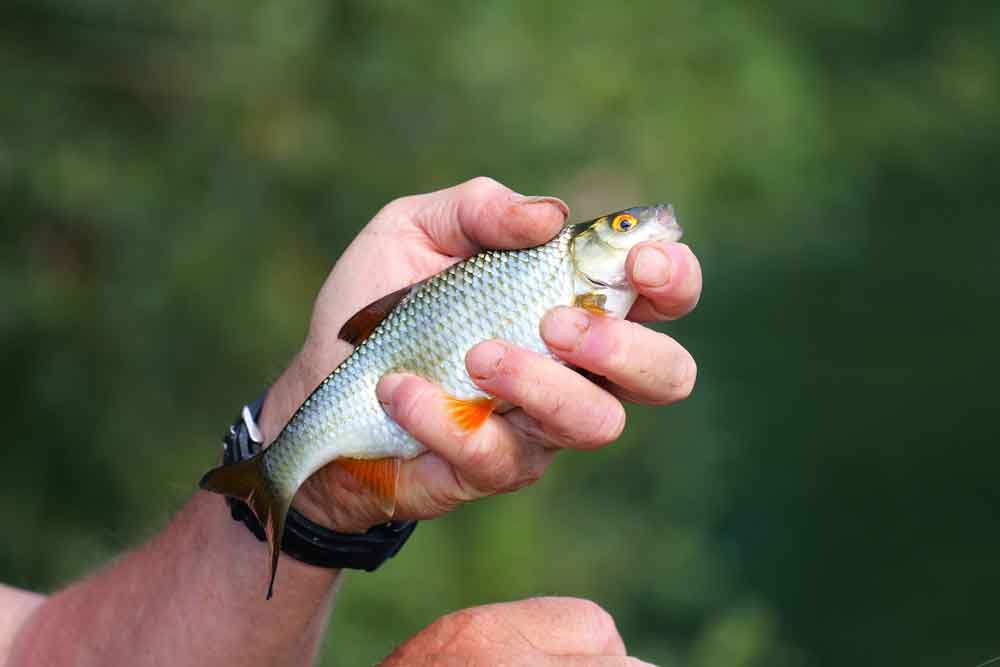
Perfect Timing
Feeding is an art form when whip fishing. You need to keep it regular enough to pull loads of bites, but not overdo it to the extent the fish in your swim go silly for it. By that, I mean competing higher in the water. To keep the occupants of a peg deeper down, where a bulk weight works best, it’s a fine balance of feeding the right quantities. This could be every cast, or every other put in, which applies both when using loose feed or groundbait. I like to feed groundbait in ball sizes just big enough to reach the required distance. I want to attract and hold fish, while not over feeding them. Very often, a combination of groundbait and loose feed can be effective. Lobbing out a small ball one cast and loose feeding the next. It’s a case of feeling your way in to find how fish respond. Groundbait is a good swim activator, while loose feeding typically takes over when bites are coming thick and fast.
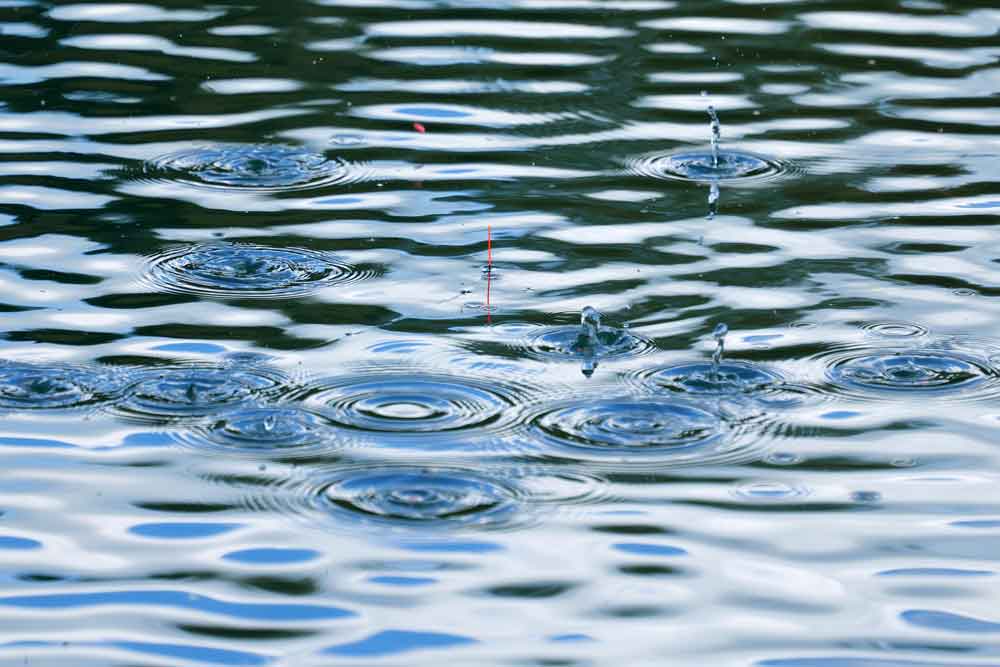
Swinging Them
With stamp fish like this constantly going into my keepnet, a big catch is likely. There are ways of keeping the average size of what you are catching slightly better. Switching from maggots to casters normally finds better quality, as can feeding pellets or hemp. Skimmers love pellets, while bigger roach go for seeds. Another bait worth considering with whip tackle is punched bread, which works well with crumb groundbait on clear water venues like canals, drains, slow moving rivers and lakes. Taking a pellet approach often gets through small fish, either loose feeding 3 mm or 4 mm sizes, or putting micros in with groundbait. Soft hooker pellets or hard banded ones combine well, as do small grains of sweetcorn directly hooked. It’s always worth experimenting with hook and feed baits to keep better quality fish interested. Stepping up feed amounts can help to beat small fish.
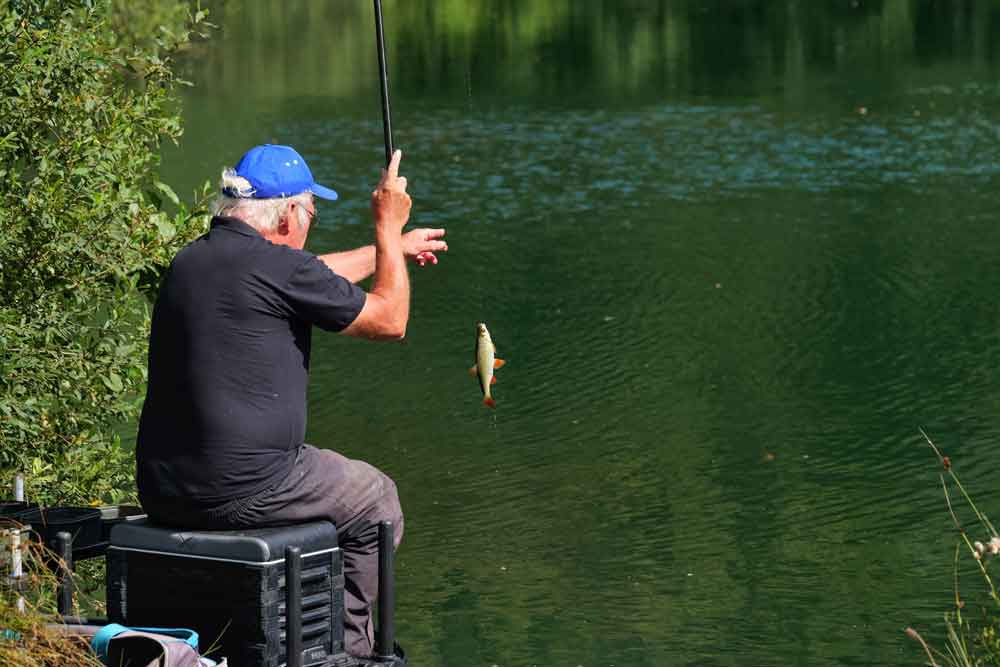
Another Way
There comes a time when elasticated top kits need to be considered with whip tackle, to cope with bigger fish and to protect such lightweight and slim poles by providing a buffer. Cadence spare top 3s cost well under £50, which allows an alternative to using a flick tip, cutting that section out and fitting a PTFE bush. It has been common to use elastic or power gum in whips over in Ireland for years because the size of the fish are often large and big weight builders. The same can apply in the UK when bagging on rivers and deep stillwaters. You lose some length by eliminating a solid carbon tip, but when targeting bumper weights of quality fish, positive feeding will normally still pull them within comfortable reach. Another consideration regarding using pole elastic, is tackle gets a lot of hammer when swinging and playing better sized fish. Elastic lessens the strain considerably.
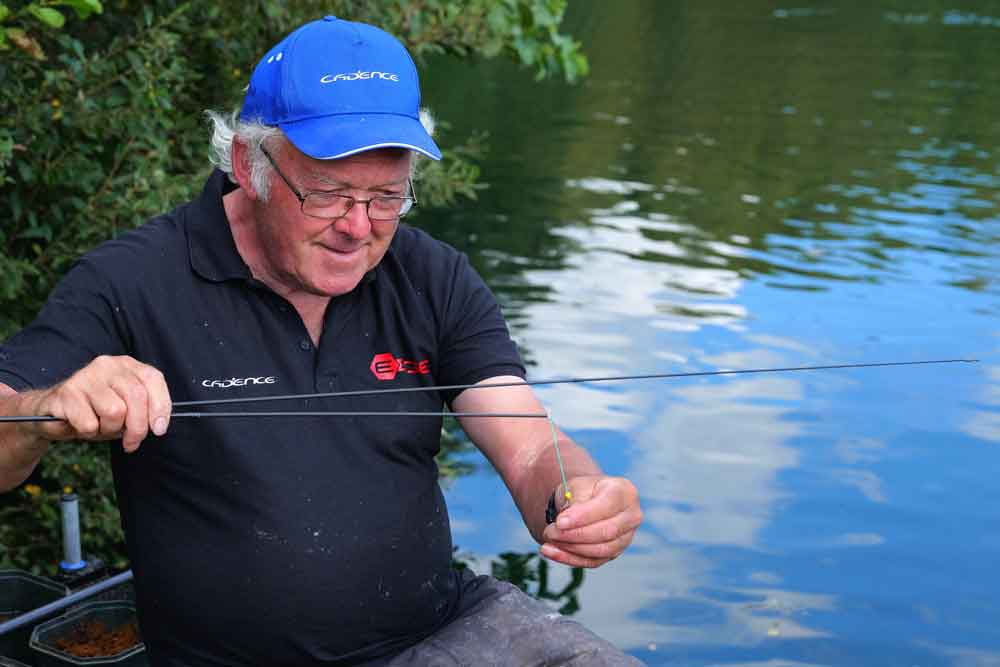
Strength Factor
You don’t need lots of internal elastic, just enough to go through the second section and what’s left of the top one after cutting it back. Internal PTFE bushes are best for this type of fishing because the main line won’t catch up behind them, like it can with external designs. Having choices of elastic diameters is helpful for covering many strength rigs and fish sizes. Edge Hollow Elastics are ideal when using short lengths in cut back whip top kits. Although I rate the Edge Hybrid option, hollow stretches slightly less. I don’t want lots of give in this situation, just a buffer or shock absorber effect, so the elastic is tensioned up a bit more too. The whip often comes into its own on flooded rivers, where coloured water makes species like bleak switch on the feed, but much bigger fish often barge in on all the action. Using elastic in that type of situation can boost weights considerably.
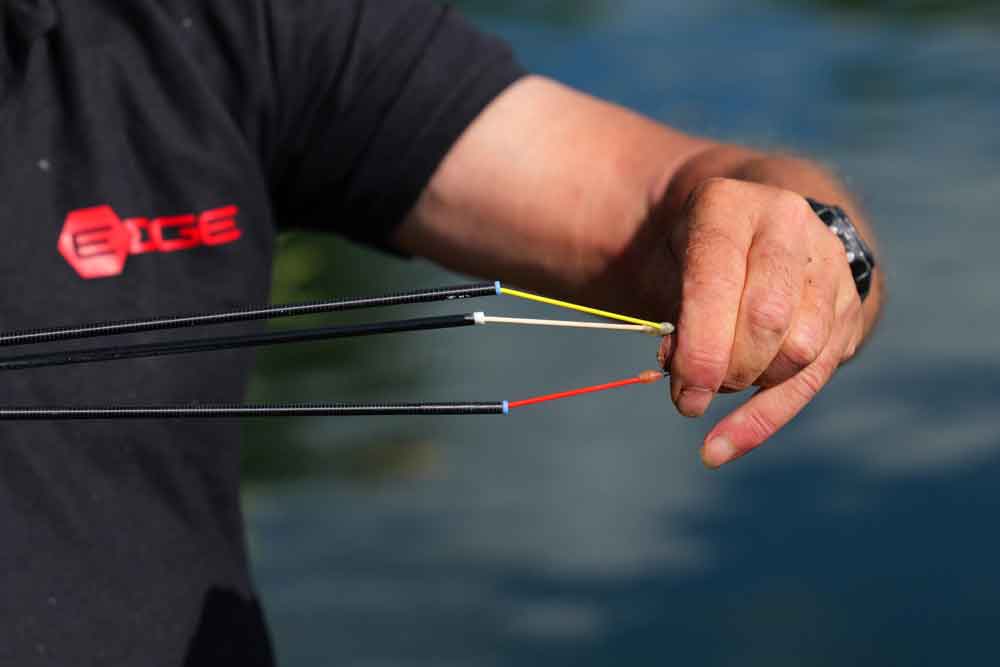
Happy Hauling
Fishing can be a deadly serious sport, but equally great fun. It’s down to personal choice if you want to take the slower specimen route, or keep busy catching small fish all day. I enjoy doing a bit of both, particularly building big weights on whip tackle after enduring several hard sessions. It’s a viable method year-round, especially for winter venues when bigger samples have stopped feeding. Whip fishing is a great way to introduce youngsters to our sport because it’s less tangle prone than other methods and more likely to produce lots of action. The latter can be key to preventing newcomers from getting bored and losing interest, also helping to teach the basics of how to feed. It’s now possible to buy extremely good ready-made pole rigs that suit whip fishing, which is another bonus in ensuring first timers catch plenty. It doesn’t hurt for us old timers to enjoy sport like this either!
